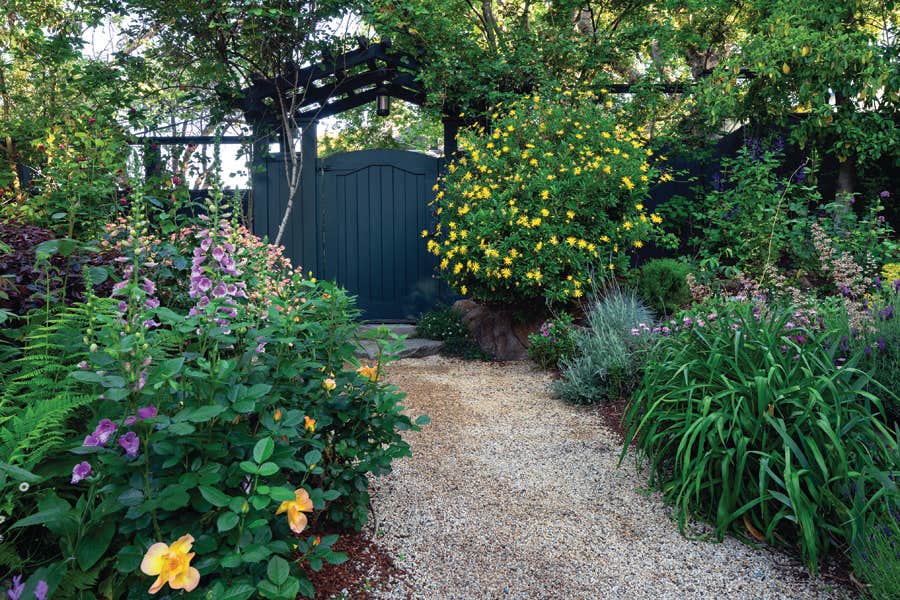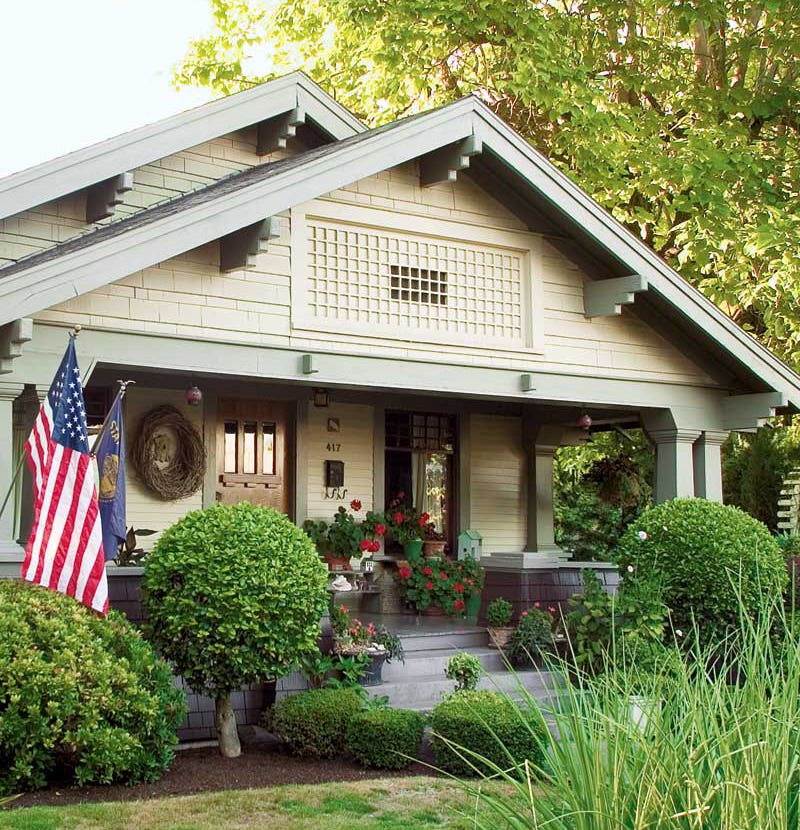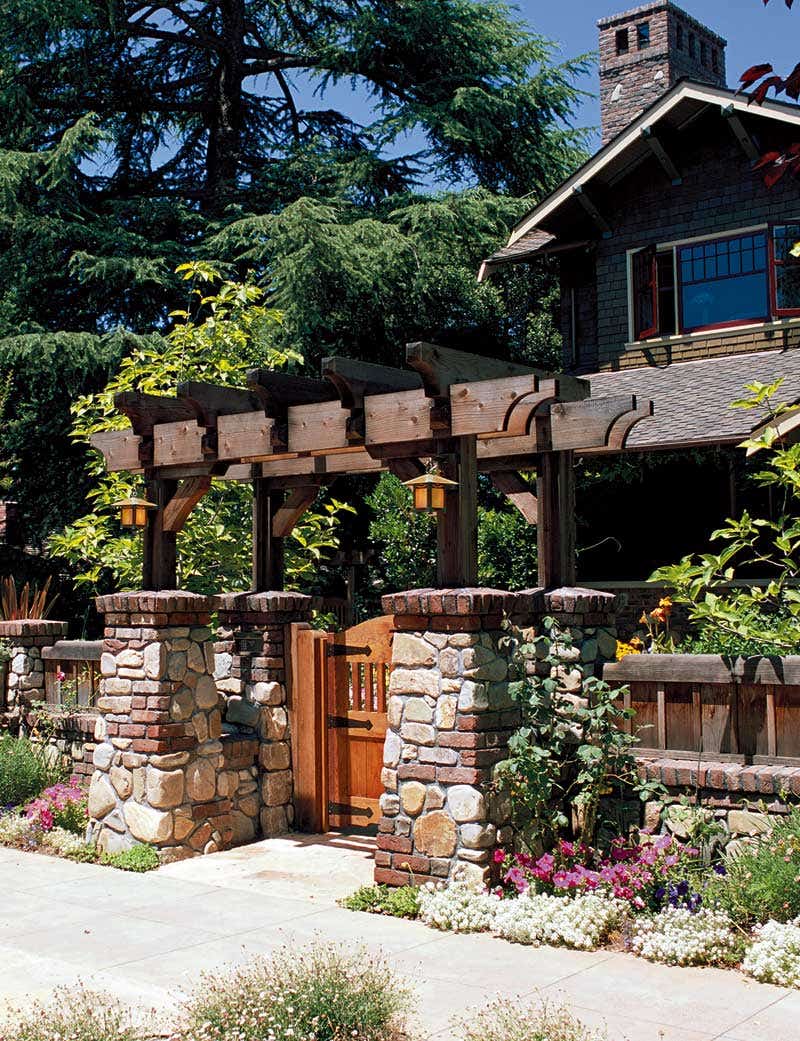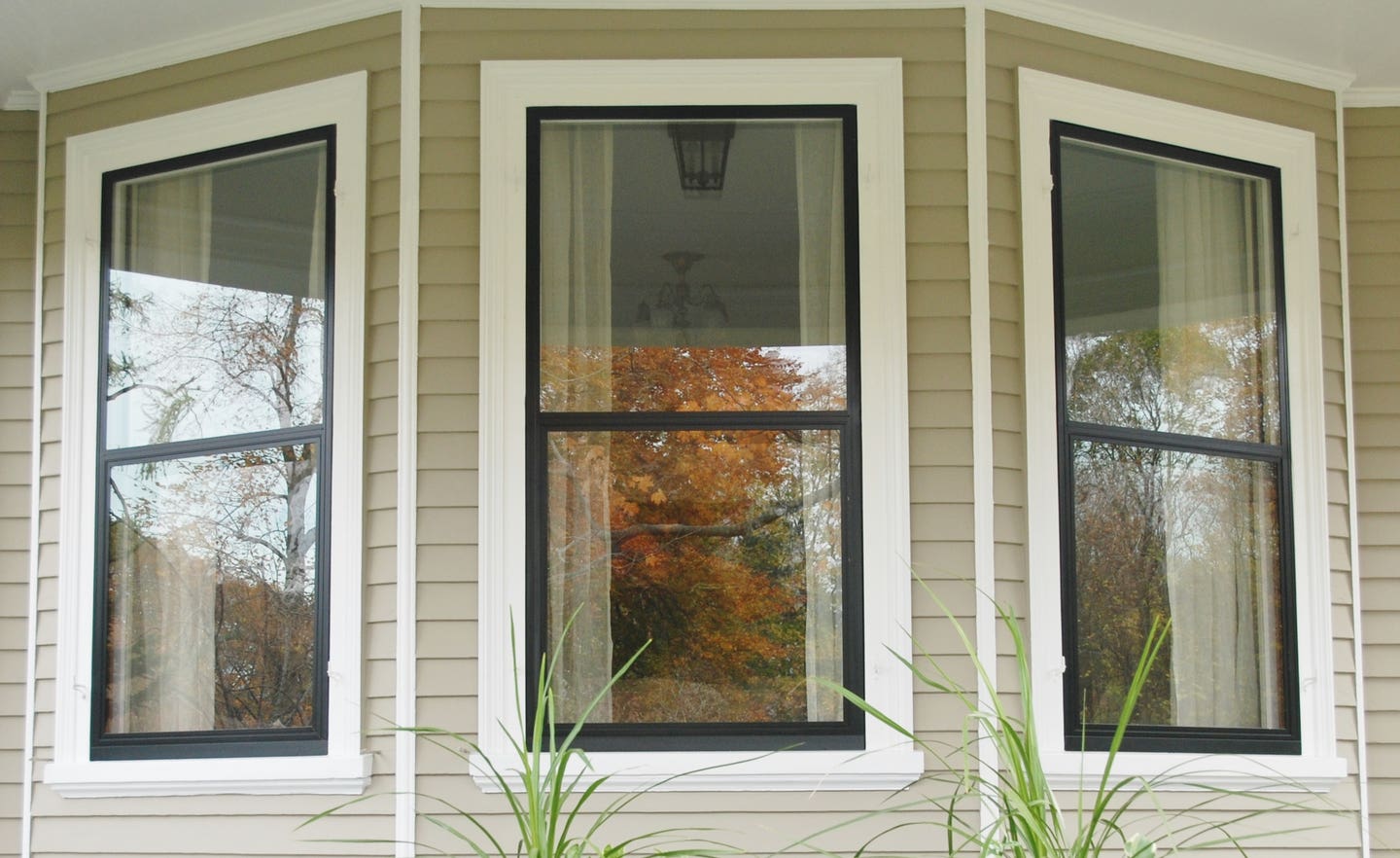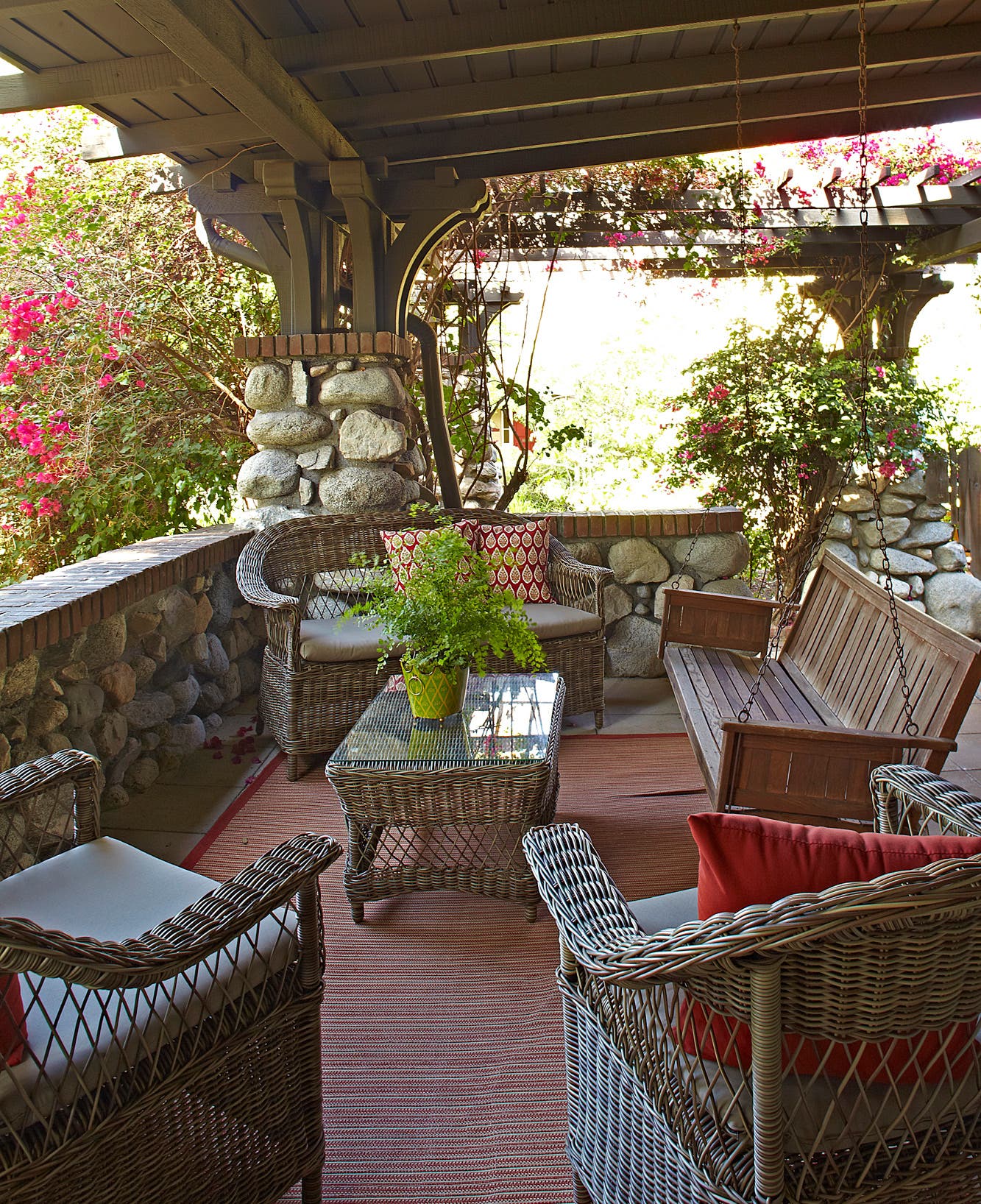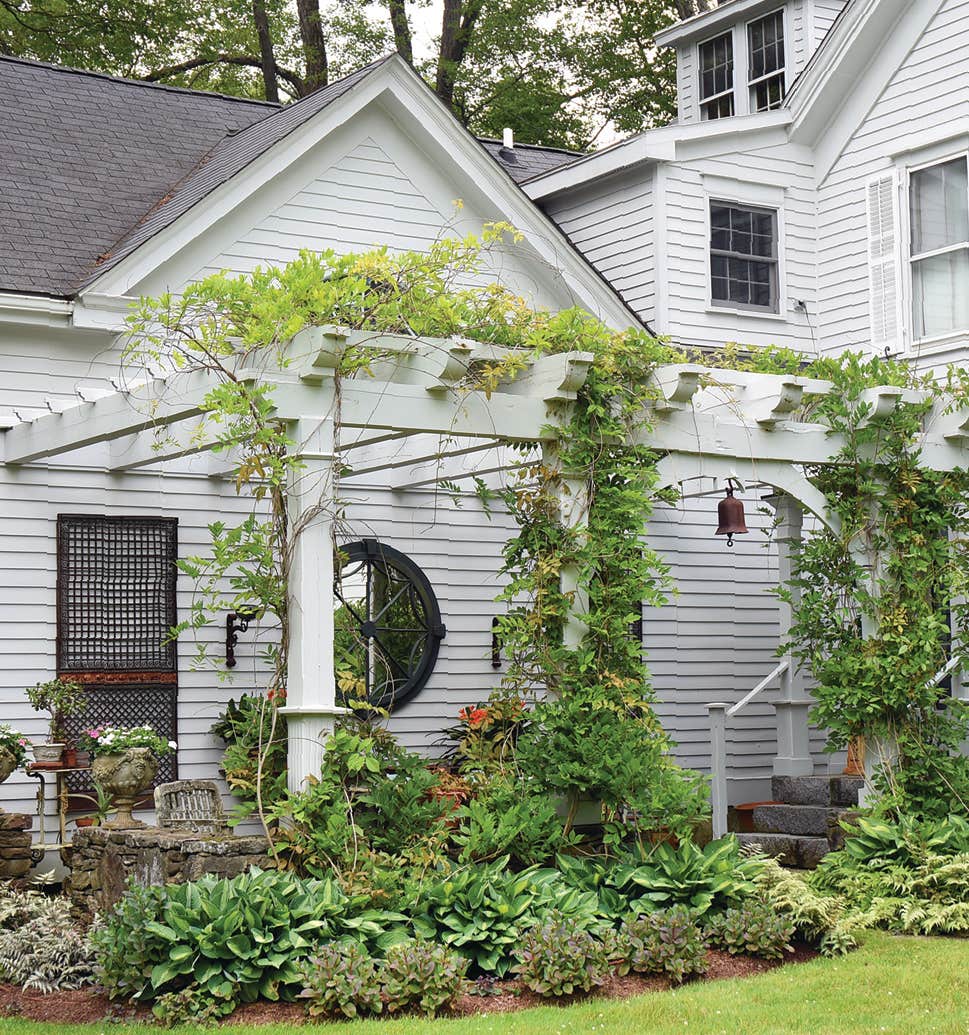The Practical Appeal of Window Awnings
Arts & Crafts-style awnings are an instant dose of old-fashioned.
Useful as they are at reducing solar gain and glare, awnings are also an eloquent statement: This house has been restored. Arts & Crafts-style awnings flutter in the breeze. They dress the house in summer clothes.
American homeowners became enamored of awnings during the 1890s. The idea remained popular during the Arts & Crafts era and beyond—for cottages and bungalows, Tudors and Dutch Colonials and Mediterranean-style houses.
Fabric awnings were gradually replaced by aluminum ones in the 1940s, and, with the advent of air conditioning, faded from use by mid century. But today you can call a local awning dealer and get new ones that look pretty much the same as what would have been there in 1915.
Stripes date to before 1900 and have always been popular, especially blue, brown, or green with white. Multi-width stripes were the rage after about 1920. Consider solid-color awnings if the house has a lot of architectural detail or is very formal.
Today you can opt for mechanical, even automatic, retracting mechanisms, or you can go old school and use a hand crank. (Even simple awnings usually have a mechanism to collapse the frame and fabric against the building—very useful when the weather is wet and windy.)
For home use, four fabric types (which go by several trade names) are appropriate: (1) Canvas is traditional and least expensive, but may last only three to five years; it’s available with an acrylic-painted surface in a wide variety of colors and stripes. (2) Vinyl-coated canvas costs 10 to 20 percent more than plain canvas, but will probably last for 10 years. It is washable and also has better sun-darkening properties. But it has a harder, shiny finish. (3) Polyester is stronger than cotton and is more resistant to mildew. Like cotton, it has an acrylic or vinyl coating. (4) Acrylic fabric was developed in the 1960s and resembles cotton canvas. It can last a dozen or more years. It is highly fade-resistant, available in many colors and striped patterns, and has a non-shiny finish. Trade names such as Sunbrella are acrylic.
As for their more practical attributes, consider these advantages:
Cooler rooms. A big awning on a south-facing window can reduce heat absorption by 75 percent. Light-colored awnings best deflect sunlight.
Energy savings. Air conditioners run more efficiently when paired with awnings.
UV-ray protection. Awnings prevent direct sunlight from fading carpets, upholstery, and wallpaper.
Rain protection. Awnings allow you to leave the windows open when it rains—as long as the wind doesn’t whip up.
Mildew is the enemy, regardless of the fabric; always extend the awning to dry completely after rain. Awnings should be removed and stored in the winter, as freezing and harsh winds will ruin the mechanism and fabrics.
Most awnings are still custom-made by local dealers, who fabricate them from fabrics and hardware made by major suppliers. The old-fashioned mechanism (a cord pulled and tied off on a cleat) is still inexpensive and available. But the European retractable awning retracts flat, preventing unsightly folds that collect rainwater (and breed mildew). Operation is by hand crank or electric motor—which can be controlled by automatic photo-electric and wind-sensitive devices.
Arts & Crafts-style Awning Resources
Start with a local search for awning dealer/installers. The following companies manufacture or distribute awnings and outdoor fabrics. Their websites are an excellent source of information and design ideas, and can help you find a local dealer.
Anchor Industries Residential and commercial awnings among their product lines; through dealers.
Awnings.com Window, retractable, dome, and spear awnings, plus outdoor fabric by the yard.
Awntech Supplier of modular awnings available with Beauty-Mark or Sunbrella fabrics. Sales through dealers, retailers, and online.
Durasol Custom SunGuard window awnings of all styles and sizes. Their American Classic line offers traditional awnings for double-hung or casement windows; through dealers.
Solair Lateral-arm retractable awnings with woven acrylic fabrics, through distribution centers nationwide.
Sunbrella Outdoor fabrics. Website provides galleries of inspiration, care and cleaning instructions, dealer locator, etc.
SunSetter Retractable Awnings Awning manufacturer and fabric source, through dealers.
Patricia Poore is Editor-in-chief of Old House Journal and Arts & Crafts Homes, as well as editorial director at Active Interest Media’s Home Group, overseeing New Old House, Traditional Building, and special-interest publications.
Poore joined Old House Journal when it was a Brooklyn-brownstoner newsletter in the late 1970s. She became owner and publisher and, except for the years 2002–2013, has been its editor. Poore founded the magazines Old-House Interiors (1995–2013) and Early Homes (2004–2017); their content is now available online and folded into Old-House Journal’s wider coverage. Poore also created GARBAGE magazine (1989–1994), the first unaffiliated environmental consumer magazine.
Poore has participated, hands-on, in several restorations, including her own homes: a 1911 brownstone in Park Slope, Brooklyn, and a 1904 Tudor–Shingle Style house in Gloucester, Massachusetts, where she brought up her boys and their wonderful dogs.



